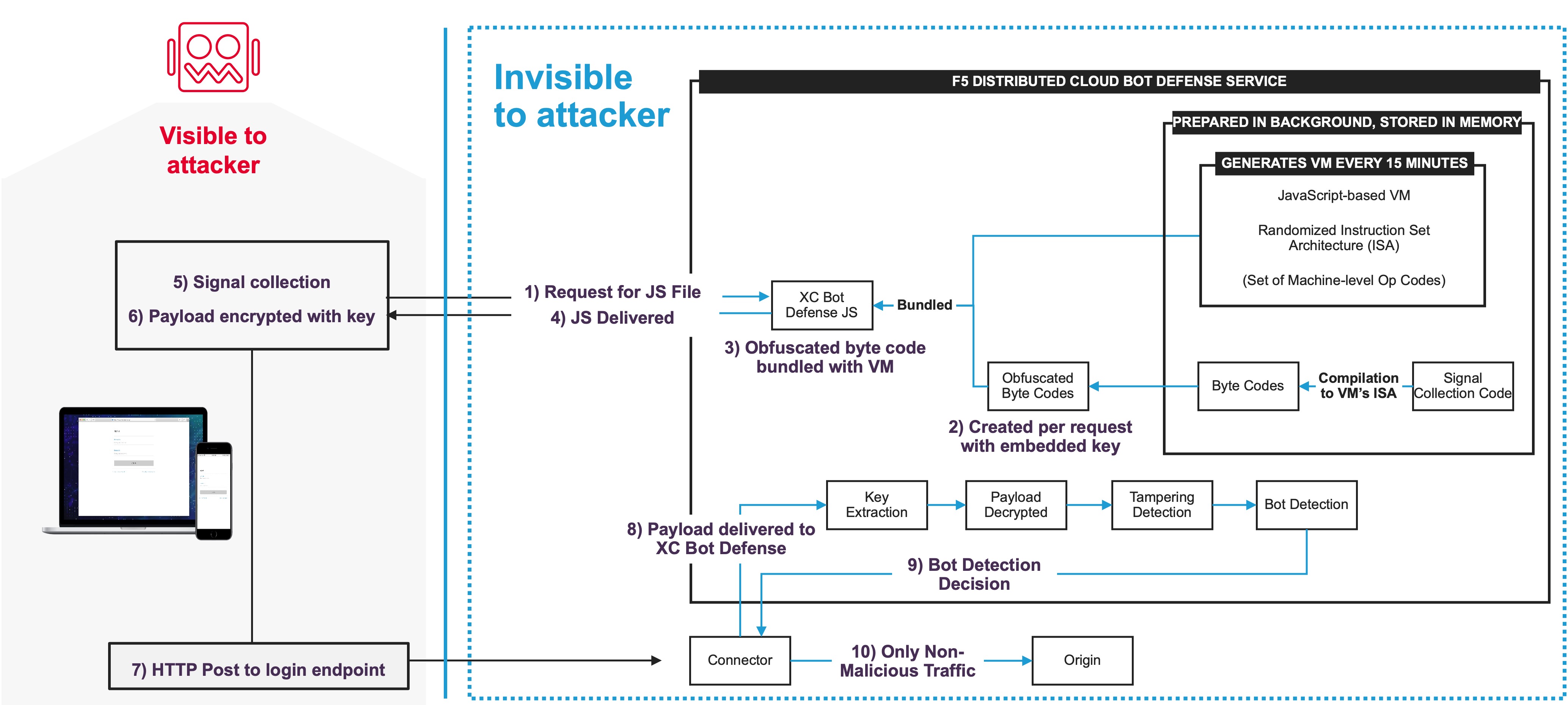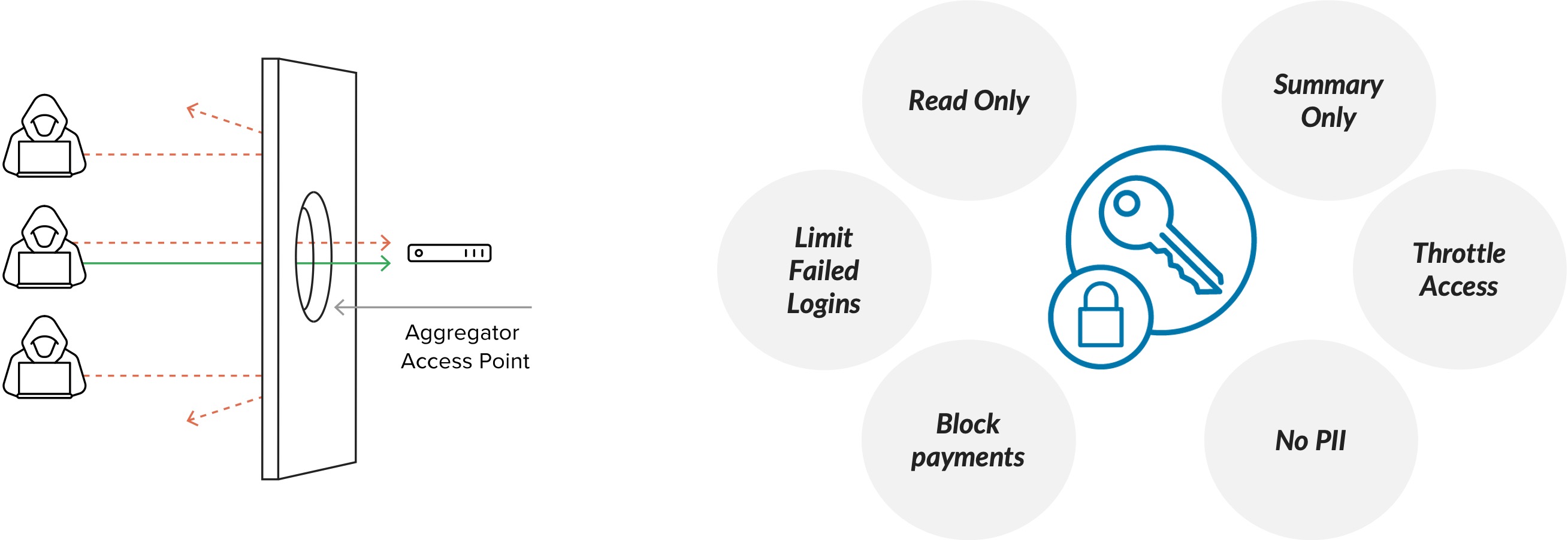봇 완화 공급업체에 물어볼 10가지 (추가) 질문
그렇다면 봇 문제를 해결했다고 생각하시나요? 하지만 지금은 확신이 없습니다. 아니면 계약이 곧 갱신될 예정이고, 봇 관리 공급업체와의 파트너십에서 최상의 투자수익률(ROI)을 얻고 있는지 확인하기 위해 실사를 진행하고 있을 수도 있습니다.
성능, 분석 및 로그는 좋아 보이지만 뭔가 이상한 점이 있습니다. 디지털 경험을 개선하고 고객을 기쁘게 하려는 모든 노력이 결실을 맺지 못했습니다. 수익은 그에 따라 증가하지 않았습니다. 환불이 역대 최고치를 기록했습니다. 고객이 헬프 데스크에 전화를 걸어 사이트 내 거래에 어려움을 겪는다고 불평하고 있으며, 대거 경쟁업체로 떠나고 있습니다. 보안 및 위험 관리 팀은 전략적 비즈니스 이니셔티브에 대한 주의가 산만해지는 일련의 거짓 긍정 결과에 대해 불평하고 있습니다.
아마도 봇 관리 공급업체에 봇 완화 공급업체에 묻는 10가지 질문 중 일부 질문을 물었을 수 있지만, 추가 검증이 필요할 것입니다.
봇 관리 공급업체를 항상 주의 깊게 살펴보는 것이 좋습니다. 봇 완화 공급업체에 물어봐야 할 10 가지 질문이 있습니다.
1. 공급업체는 성공을 어떻게 측정합니까?
게임의 이름은 효능 입니다... 아니면 그럴까요?
봇 완화 공급업체는 효율성을 떨어뜨리는 데 주력하지만, 공격 포착율은 방정식의 일부에 불과합니다. 엄격한 보안 태세를 갖추면 적발률을 높일 수 있지만, 보안팀에 엄청난 양의 거짓 양성 반응이 발생하고, 고객 이탈로 인한 마찰이 발생하여 판매가 중단되고 사업 잠재력이 저하될 수 있습니다.
거짓 긍정, 사용자 마찰, 고객 경험을 개인화하거나 개선할 수 있는 기회, 범죄자가 공격을 어떻게 재편하더라도 회복력을 유지하는 것과 같은 요소를 고려하면 우리는 효과 에 대해 더 많이 이야기하고 있는 것입니다.
2. 이 서비스는 다양한 환경과 클라우드에서 앱과 API를 보호합니까?
이는 중요한 고려사항입니다. 적절한 비즈니스 연속성과 운영을 간소화하고 최고의 경쟁 우위를 제공하는 생태계를 활용하여 적합하다고 생각하는 방식으로 비즈니스를 운영할 수 있습니까? 아니면 환경을 재구성하고 디지털 발자국을 공급업체의 독점 플랫폼으로 옮겨야 합니까? 해당 플랫폼이 저하되거나, 심지어 중단된다면 어떻게 될까요?
새로운 디지털 경제 속의 소비자는 간단하고 안전한 경험을 요구하며, 이에 따른 작은 문제도 거래 중단 또는 브랜드 포기로 이어질 수 있습니다. 당신은 정말로 공급업체에 종속되기를 원하십니까? 아니면 자신의 보안 운명을 스스로 통제하고 싶으십니까?
이제 클라우드와 아키텍처 전반에 삽입 지점을 제공하여 신속하고 강력한 보호가 가능해지면서 모든 곳의 앱과 API를 보호하기 위해 어디에나 봇 방어를 구축할 수 있습니다. 이를 통해 복잡성은 줄이고, 안정성은 높이며, 혁신을 지원하는 동시에 위험을 효과적으로 관리할 수 있습니다.
3. 기존 보안 투자를 극대화할 수 있나요?
대부분의 보안 및 위험 관리팀은 사업을 운영하고 끊임없이 진화하는 위협에 맞서기 위해 다양하고 복잡한 도구를 배포했습니다. 예를 들어, 웹 애플리케이션 방화벽, 애플리케이션 프록시, 전자상거래를 위한 서비스형 애플리케이션 플랫폼 등이 있습니다. 통합이 매력적일 수 있지만, 업계 최고 수준의 심층 방어 보안 태세는 여전히 유행에 뒤떨어져 있지 않습니다.
실제로, 기존 투자를 활용하면서 봇과 악의적 자동화에 대한 방어를 강화하는 것은 새로운 보안 도구나 플랫폼의 운영 측면을 배우기 위한 시간이 제한적인 실무자에게 이상적인 선택이 됩니다. 이를 통해 산업화된 공격 라이프사이클의 다른 부분에 집중하던 팀을 정렬하는 데 도움이 됩니다. 산업화된 공격 라이프사이클은 일반적으로 봇과 악성 자동화로 시작하지만 감지되지 않으면 사기를 초래할 수 있습니다.
이상적인 공급업체는 기존 보안 투자를 극대화하고 보안 및 사기 대응 팀의 운영 부담을 최소화하여 전략적 위험 관리 이니셔티브에 집중할 수 있도록 해줍니다.
4. 공급업체는 변조 및 우회를 방지하기 위해 어떤 유형의 통제를 사용합니까?
동기가 부여되고 정교한 악성 행위자는 반자동화 방어를 우회하고 감지를 피하기 위해 정찰 및 역엔지니어링을 활용합니다. 다크 웹 포럼에는 인기 있는 봇 관리 플랫폼을 회피하는 방법에 대한 사례가 가득합니다. 다크넷 지문 저장소에서는 도난된 고객 토큰을 판매합니다. 자동화 프레임워크는 계속 발전하고 있으며 인간의 행동을 모방하거나 심지어 그 행동을 그대로 보여줄 수도 있습니다(예: CAPTCHA 해결 서비스와 통합).
가장 좋은 방어는? 기본적으로 스푸핑이 불가능하고 내구성이 뛰어나며 암호화/난독화된 원격 측정 데이터를 사용하여 다양한 고급 네트워크, 장치, 환경 및 행동 신호를 기반으로 감지합니다. F5의 JavaScript는 맞춤형, 고객별 구현과 머신 수준 명령어 내에서 빈번한 바이트코드 무작위화를 활용하므로 리버스 엔지니어링을 컴퓨팅 측면에서 비현실적으로 만듭니다. 이러한 기술적 이점은 공격자의 조작을 막는 정확한 탐지 및 보안 대책을 제공하는 데 도움이 됩니다.
또한, 보안 운영 센터(SOC) 팀 구성원이 AI 기반의 회고적 분석과 지속적인 모니터링을 통해 비정상적인 트래픽 패턴이나 변조를 발견할 수 있습니다.
사이버범죄의 ROI를 방해하여 성공을 불가능하게 만들거나 실행 불가능할 정도로 비실용적으로 만듭니다.
5. 해당 서비스는 타사 API와 애그리게이터를 통한 공격을 방지하기 위한 제어 기능을 제공합니까?
고객은 단순함과 가치를 요구합니다. 이는 종종 계정이나 서비스에 대한 통합된 보기를 갖는 것을 의미합니다. 하지만 의도치 않은 위험을 충분히 이해하지 못한 채 타사 통합을 허용할 수 있을까요? 글쎄요, 빨리 알아내는 게 좋을 거예요. 그렇지 않으면 경쟁자들이 이를 이용할 테니까요.
봇 관리에서는 타사 통합을 통해 가능한 비즈니스 기회를 지원해야 하지만, 해당 통합을 통해 손상 위험이 발생하지 않도록 해야 합니다. 어떻게? 글로벌하게 집계자를 허용하거나 허용하지 않는 거짓 이분법을 사용하는 대신, 허용/합법적인 집계자와 관련 권한을 세부적으로 제어할 수 있는 정책을 활용합니다.
6. 공급업체는 몇 단계의 감지를 제공합니까?
모든 범죄와 마찬가지로 사이버범죄도 수단, 동기, 기회 에 따라 달라집니다. 일부 조직, 특히 금융 서비스 부문의 경우, 계정의 인식된 가치가 투자수익률(ROI)을 매력적으로 인식 하여 동기를 부여합니다. 만약 동기를 부여받은 악의적인 행위자가 교묘하다면, 옛날 방식의 봇 전투 훈련을 위해 작전실에 들어갈 준비를 하는 게 좋습니다.
따라서 정확하고 지속 가능한 원격 측정, 다양한 집단 방어 네트워크 내의 고도로 훈련된 인공 지능, 그리고 실시간 및 사후 분석을 기반으로 한 다단계 감지를 채택하는 것이 필수적입니다. AI와 "탄소 단위"(인간)를 사용하는 2단계 접근 방식은 최적의 보호와 민첩성을 제공하여 자율적으로 및/또는 의도적으로 대응책을 배치하여 동기가 부여된 적을 혼란스럽게 하고 궁극적으로 억제합니다.
7. 해당 서비스가 원하는 보안 태세와 운영 모델에 적응할 수 있습니까?
봇 완화에 대해 크게 걱정하지 않고도 강력하면서도 자체적으로 지속 가능한 솔루션을 신속하게 구축하고 싶으신가요? 확인하다. 보안 태세를 제어하고 신뢰할 수 있는 자문가와 협력하여 보안 및 사기 방지 팀의 전문성을 확장하고 싶으신가요? 확인하다. 어떻게 진행해야 할지 확신이 없지만, 여러 옵션을 평가하고 특정 배포나 운영 모델에 얽매이는 것을 피하고 싶으신가요? 확인하다.
민첩성과 안정성이 만나면 춤은 매우 아름다울 수 있습니다. 어떤 경우에도, 봇 완화 공급업체는 필요할 때 작전실에 뛰어들어 비즈니스를 손상과 남용으로부터 방어할 준비가 되어 있어야 하며, 고객의 등을 지켜야 합니다.
8. 이 서비스는 어떤 유형의 완화 조치를 수행합니까?
좋아요. 이제 내 초보자 실수를 인정할 때가 됐다. 저는 한때 봇 완화를 설명하기 위해 "차단"이라는 단어를 무심코 사용했고, 타임아웃을 받았고 저희의 최고 전문가 중 한 명으로부터 코칭을 받았습니다. 완화 유형은 다음과 같습니다. 상황에 따라 달라집니다. 그것은 체스 게임입니다.
적절한 조치는 공격자의 카나리아 계정을 자동으로 모니터링하거나 신뢰할 수 있는 고객의 인증을 최적화하는 것을 의미할 수 있습니다.
아마도 공격자는 가짜 계정을 만들 수는 있지만 그 계정에 로그인할 수는 없는 것일 수도 있습니다.
때로는 의심되는 사기 요청을 완전히 차단하는 것이 합리적일 수 있습니다. 때로는 요청을 허니팟으로 리디렉션하거나 사용자 정의 웹 페이지로 응답해야 할 수도 있습니다.
콘텐츠 스크래퍼나 손상된 집계기 등에서 악의적인 의도가 의심되는 경우 봇 관리에서는 전송 중인 요청을 변환하여 잘못된 방식으로 공격자를 속이고, 특정 애플리케이션 기능에 대한 액세스를 제한하고, 트래픽을 조절하거나, 후속 조치 및 감시 목록에 대한 요청을 플래그로 지정할 수 있습니다.
결론적으로 보안팀은 트래픽 유형, 소스, 대상에 따라 세부적인 완화 제어를 적용할 수 있어야 하며, 대응책은 현재 공격에 대응하기 위해 동적이고 적응 가능해야 합니다.
효과성은 효과 그 자체 보다 더 중요하다는 것을 기억하세요. 더 이상 저에게는 작가의 막힘이 없습니다.
9. 공급업체는 보안 제어를 사용하여 비즈니스 성과를 개선할 수 있습니까?
조직에서는 효과적인 봇 완화책을 채택하여 중요한 앱과 API를 보호함으로써 다양한 비즈니스 성과를 개선할 수 있습니다. 결국 세 가지 중요한 질문이 생깁니다. 당신은 인간입니까? 당신은 자신이 말하는 그런 사람인가요? 당신의 의도는 무엇입니까? 디지털 여정에서 모든 상호작용에 대해 이 세 가지 질문에 꾸준히 답하면 보안 기술을 사용하여 비즈니스 성과를 개선하는 데 큰 도움이 될 것입니다.
예를 들어:
- 전환율, 유지율, 충성도 향상
- 최고 매출 증가
- 최종 손실 감소
- 복잡성 감소
- 운영 효율성 향상
- 사기 감소, 마찰 감소, 노력 감소
10. 해당 공급업체는 정교하고 공격적인 사이버 범죄자와 국가에 대한 실전 테스트를 거쳤습니까?
올바른 봇 완화 공급업체와 협력하면 아키텍처, 클라우드 또는 CDN에 관계없이 효과적이고 사용하기 쉬우며 실전에서 검증된 보안을 통해 중요한 애플리케이션을 보호할 수 있습니다.
모든 솔루션의 핵심은 공격자가 무엇을 하든 회복력을 유지하여 공격자가 투자한 수익을 얻지 못하도록 하는 것입니다. 결국 그들은 노력을 포기하고 계속 나아갈 것이다.
효과 에 초점을 맞춘 결과 기반 방어를 통해 세계에서 가장 가치 있는 브랜드를 가장 정교한 사이버 범죄자로부터 보호하는 공급업체를 고려하는 것이 합리적입니다.
자세한 내용은 https://www.f5.com/solutions/application-security/bot-management 에서 확인하세요.







